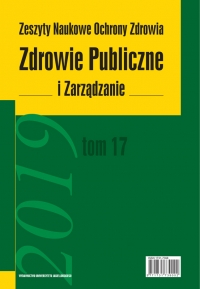Priorities, factors and alternatives involved in the choice of medical specialty – an empirical study on year sixth medical students
Priorities, factors and alternatives involved in the choice of medical specialty – an empirical study on year sixth medical students
Author(s): Agnieszka Pawełczyk, Wiktor Adamus, Maciej Radek, Tomasz PawełczykSubject(s): Psychology, Higher Education , Management and complex organizations, Health and medicine and law
Published by: Wydawnictwo Uniwersytetu Jagiellońskiego
Keywords: Analytic Hierarchy Process (AHP); alternatives; decision making; medical specialty; medical students; priorities;
Summary/Abstract: Phenomenon. The process of career decision making by medical students has been the subject of many studies analyzing the choice. However, the studies have not analyzed determination of global priorities for the criteria of choice or alternatives regarding the choice of medical specialty. The goal of this paper is to determine the weights (priorities), factors and alternatives involved in the choice of specialty for year six medical students. Approach. A sample of 202 final-year medical students at the Medical University was examined using Saaty’s Analytic Hierarchy Process. During interviews, the students used the Saaty’s scale to pair various factors influencing their choice of medical specialty. Analysis was performed to evaluate the crucial decisive criteria and various decisive models. Findings. When choosing the medical specialty, the highest rank was given to “individual physician’s aptitude and expected professional attainment” (P = 0.4748), followed by “the features of the medical specialty” (P = 0.3636) and “the process of training for the specialty” (P = 0.1616). The most important sub-criteria were “intellectual qualities and competencies useful in practicing the specialty”, “place of work” and “opportunity to create one’s own medical practice”. A model of specialty choice was obtained. The most important criteria of choice were “opportunities for professional career in healthcare entities”, “place of work”, “opportunity to create one’s own medical practice” and “expected income”. Insights. Understanding the factors influencing choice of specialty enables workforce planning to meet local and national healthcare needs. It also helps optimize the profile of medical education courses offered by medical universities. The results obtained, although limited in their generalisability, may support organizing specific curricula and strategies to encourage the choice of specialties in short supply.
Journal: Zdrowie Publiczne i Zarządzanie
- Issue Year: 17/2019
- Issue No: 2
- Page Range: 62-73
- Page Count: 12
- Language: English

